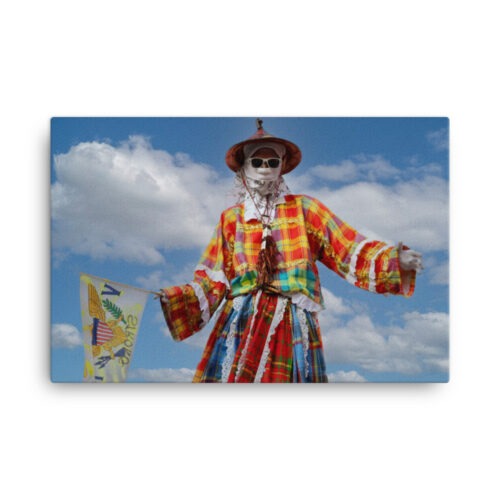Have you ever marveled at the sight of towering Caribbean stilt walkers dancing gracefully at festivals and parades? These vibrant, gravity-defying performers are known as Moko Jumbies, and they hold a significant place in the cultural tapestry of St. Croix. With their fascinating history and symbolism, they are a modern-day fixture of local celebrations on our island.
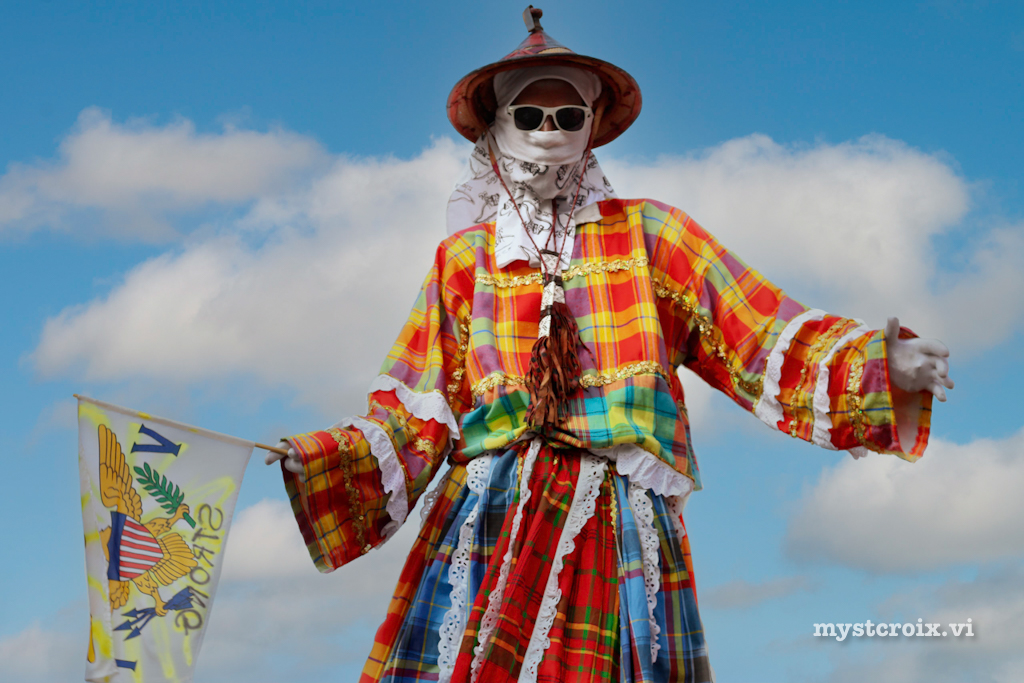
The Origins of Moko Jumbies
Moko Jumbies have roots in West African traditions, particularly from the Yoruba and Igbo tribes. The word “Moko” refers to a god or spirit, and “Jumbie” is an Afro-Caribbean term for ghost or spirit. A tradition brought to the Caribbean by enslaved Africans, Moko Jumbies were believed to have the power to ward off evil spirits and bring good fortune to communities. Their impressive height, achieved through the use of stilts, symbolizes their connection to the spiritual world, standing tall as guardians over the people.
Moko Jumbies in St. Croix and Virgin Islands Culture
On St. Croix, Moko Jumbies are more than just performers; they are cultural icons. They can be seen at various events, including parades, festivals, and Carnival celebrations performing to traditional Virgin Islands Quelbe and other Caribbean music. Their elaborate costumes are adorned with bright colored madras fabrics, raffia skirts in a nod to West Africa, and symbols that add to their mystical allure. Their presence at events and celebrations is a testament to the Virgin Islands rich African heritage.
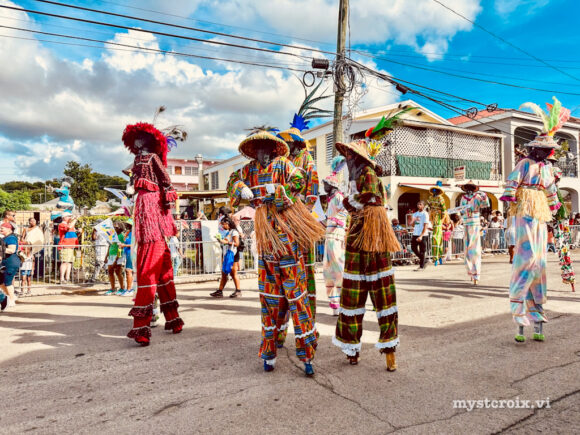
One of the earliest mentions of Moko Jumbies in the West Indies is from 1791 during a Christmas event with a masked moko jumbie traveling the streets accompanied by musicians. Could that have been on St Croix? Possibly! Moko Jumbies traditionally danced at the estates on holidays.
In the 1930’s and 40’s a St Croix fisherman, Fritz Isaiah Freely aka “Marshall”, would perform as a Moko Jumbie at holiday gatherings and celebrations. Another key figure in the Virgin Islands history was John Magnus Farrell who was born on St Croix, moved to St Thomas and then migrated to New York City. He was featured in National Geographic in the 1950’s bringing more recognition to the cultural tradition and art form.
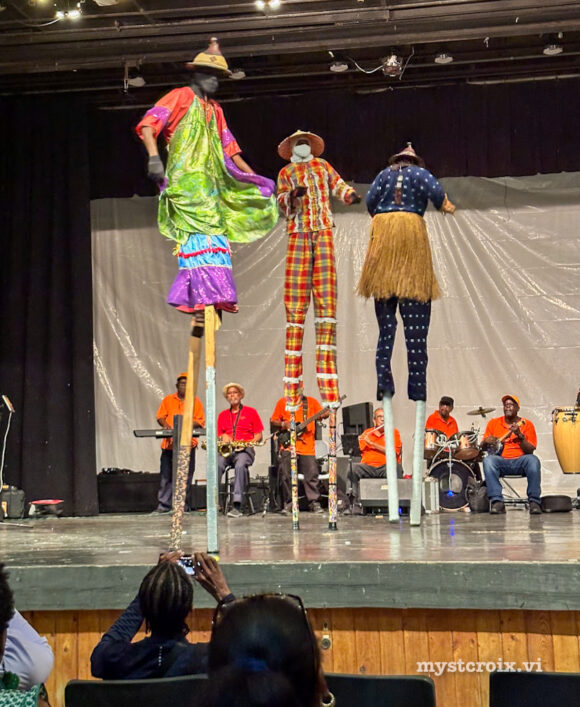
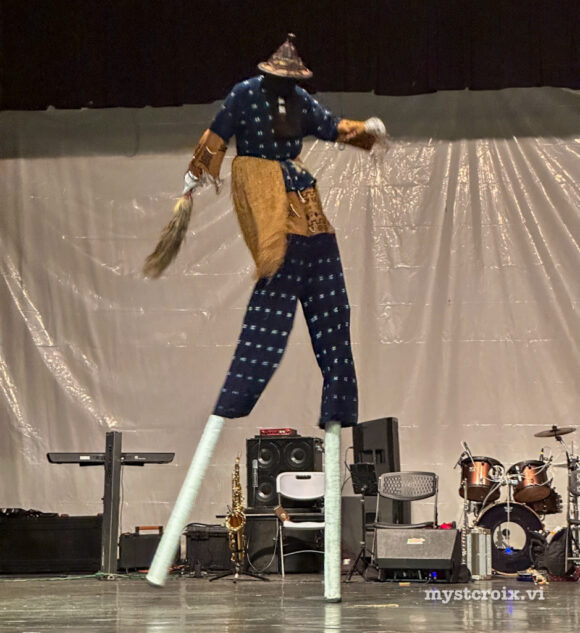
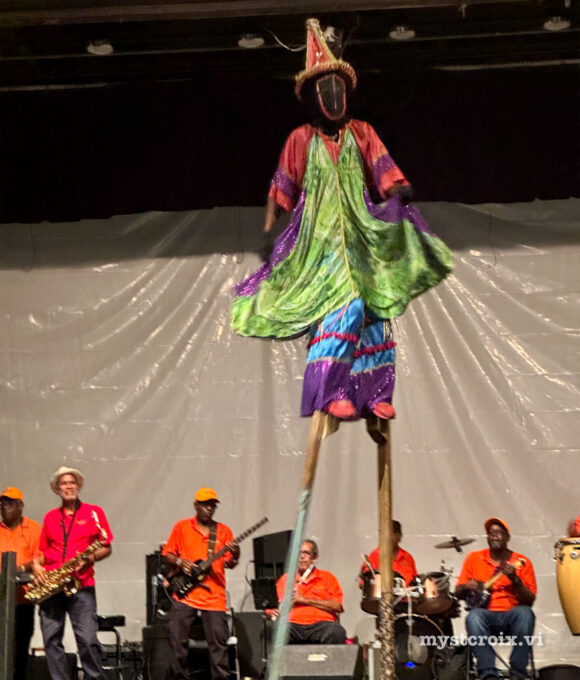
Moko Jumbies have become a symbol of resilience and pride for the people of St. Croix. They are reminders of the ancestors’ strength and the enduring spirit of the island community. Watching a Moko Jumbie dance is not just a visual spectacle; it’s an experience that connects the crowd to their roots in history.
The Art of Becoming a Moko Jumbie
Becoming a Moko Jumbie is no small feat. It requires balance, strength, and hours of practice. Many Moko Jumbies start learning at a young age under the masterful guidance of The Guardians of Culture led by Willard John and other seasoned performers. This important cultural art form has been passed down through generations, ensuring that this vital cultural tradition continues to thrive.
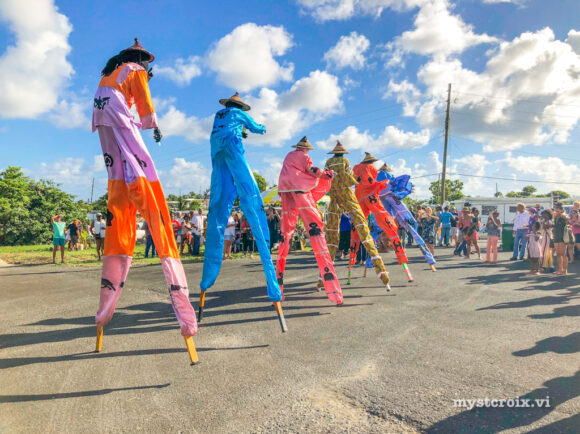
Moko Jumbies are trained to dance, perform acrobatic feats, and even interact with the audience—all while balancing on stilts that can be up to ten feet high! It’s a true testament to their skill and dedication.
The Guardians of Culture: Preserving Tradition
One of the fathers of the modern day Moko Jumbies was Alli Paul from St Thomas. He started performing in 1960 at the age of 12 and began the tradition of performing as a troupe exanding from appearances of singular Jumbies. He was the first to start training female Moko Jumbies and is credited with redesigning the stilt platform to give it more flexibility, allowing for more acrobatic moves.
Eventually, Alli Paul taught Hugo Moolenaar the art form and he taught John McClevity, Jr. who was Willard John’s cousin. After some convincing, McClevity taught Willard in 1974 and he performed at his first parade in 1975.
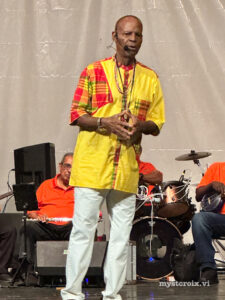
In 1993, John, along with Anna Thompson started the Guardians of Culture program at Ricardo Richard’s school. To date the program has trained over 350 Moko Jumbies and they currently support about 40 Crucian students and performers in the program with the goal of promoting and preserving the cultural art.
“The best way to preserve culture is to live it”
~ Willard John.
As with many cultural practices, it’s crucial to preserve and promote the tradition of Moko Jumbies. Organizations like the Guardians of Culture Moko Jumbies, led by Willard John, work tirelessly to keep the art form alive. They provide training, create performance opportunities, and educate the public about the cultural significance of Moko Jumbies.
Supporting these efforts is essential for ensuring that future generations can continue to enjoy and take pride in this unique aspect of St. Croix’s heritage.
Modern-Day Celebrations
Today, Moko Jumbies are a staple at many St. Croix events. During Carnival, they lead parades, captivating spectators with their high-energy performances. They are also a popular feature at cultural festivals, school events, and even private parties. Their presence adds a touch of magic and excitement to any occasion.
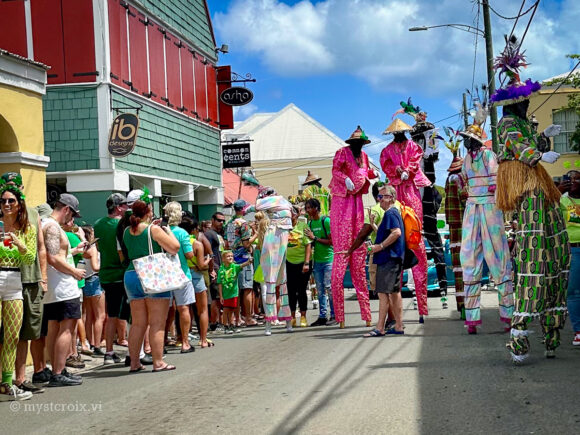
Some of the best opportunities to witness Moko Jumbies in action are during the annual Crucian Christmas Festival Parade in Frederiksted, St Patrick’s Parade, and quarterly Jump Up celebrations in Christiansted. The festival and parades showcase the island’s vibrant culture, and Moko Jumbies play a central role in these celebrations. Their performances are a highlight, drawing both locals and visitors to marvel at their incredible skills. Be sure to bring your camera and a few dollars to tip the Moko Jumbies to get your picture with them.
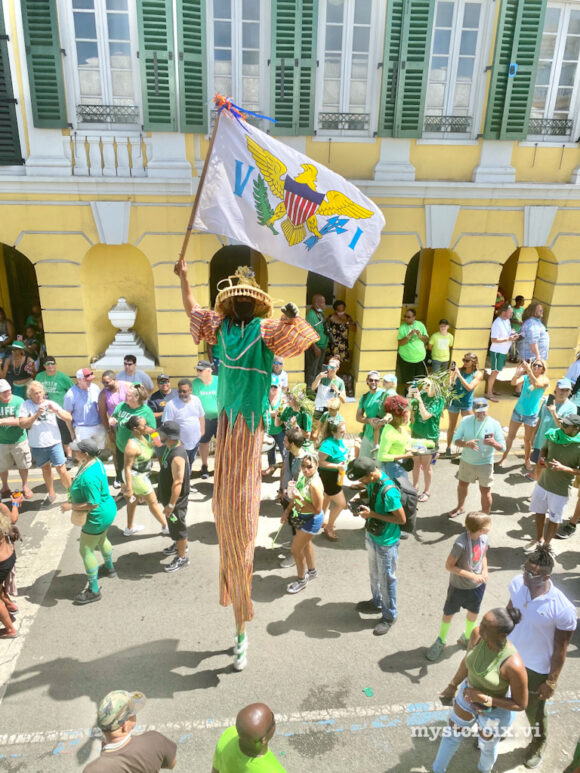
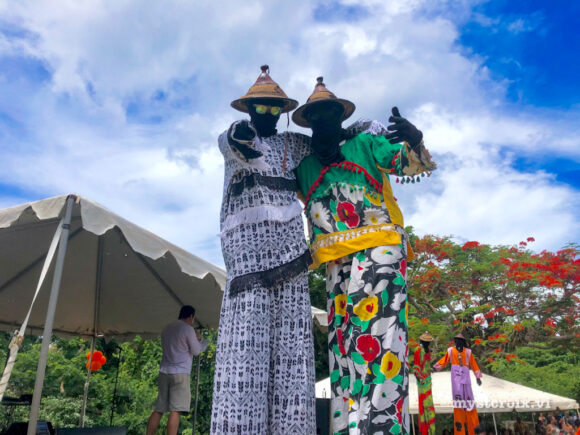
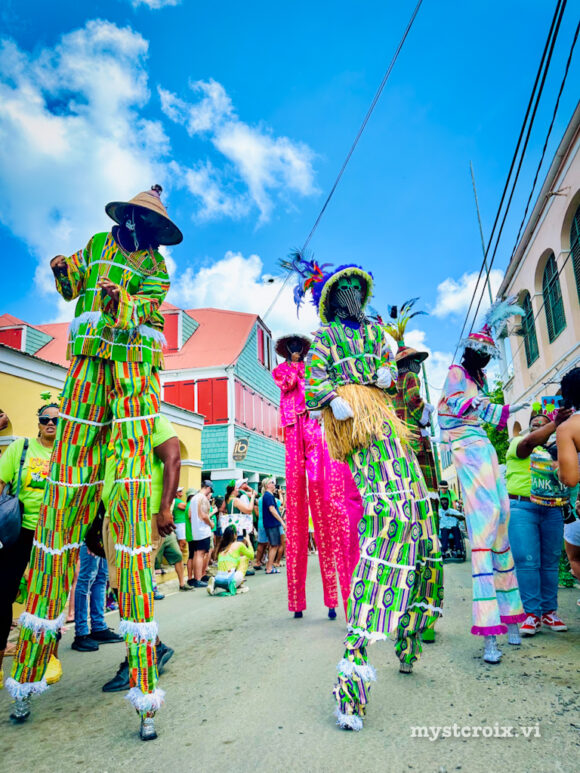
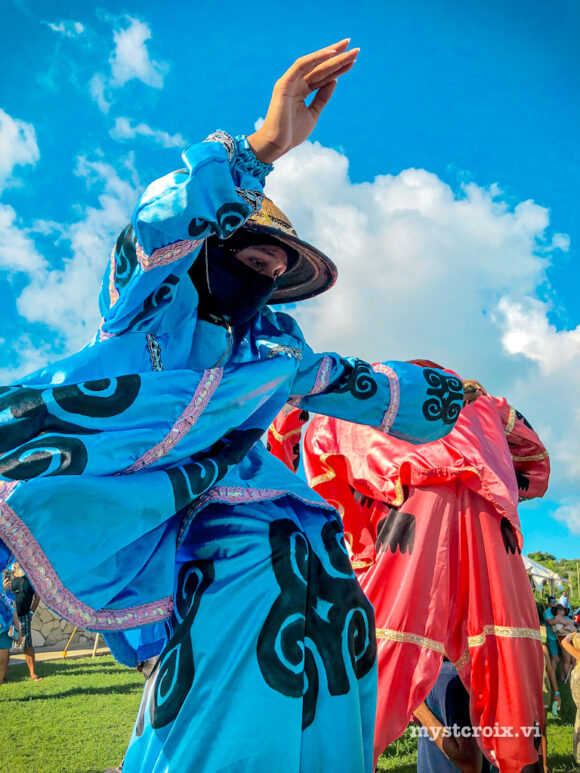
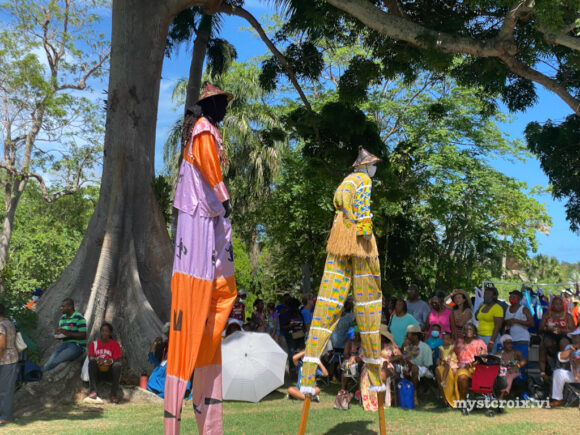
Preserving the Tradition
Moko Jumbies are a vibrant and essential part of St. Croix’s cultural identity. They embody the resilience, spirit, and creativity of the island’s people. Whether you’re a local or a visitor, experiencing a Moko Jumbie performance is a must. It’s a beautiful reminder of the rich history and traditions that make St. Croix such a special place.
By supporting the Guardians of Culture Moko Jumbies, we can all help to preserve and celebrate this incredible piece of our island’s heritage. Visit their Facebook page to learn more.
The next time you see a Moko Jumbie dancing high above the crowd, take a moment to appreciate the cultural significance and the enduring spirit of this incredible tradition.
You can find where the Guardians of Culture will be performing on our St Croix Calendar website along with other live entertainment, festivals, and more.


